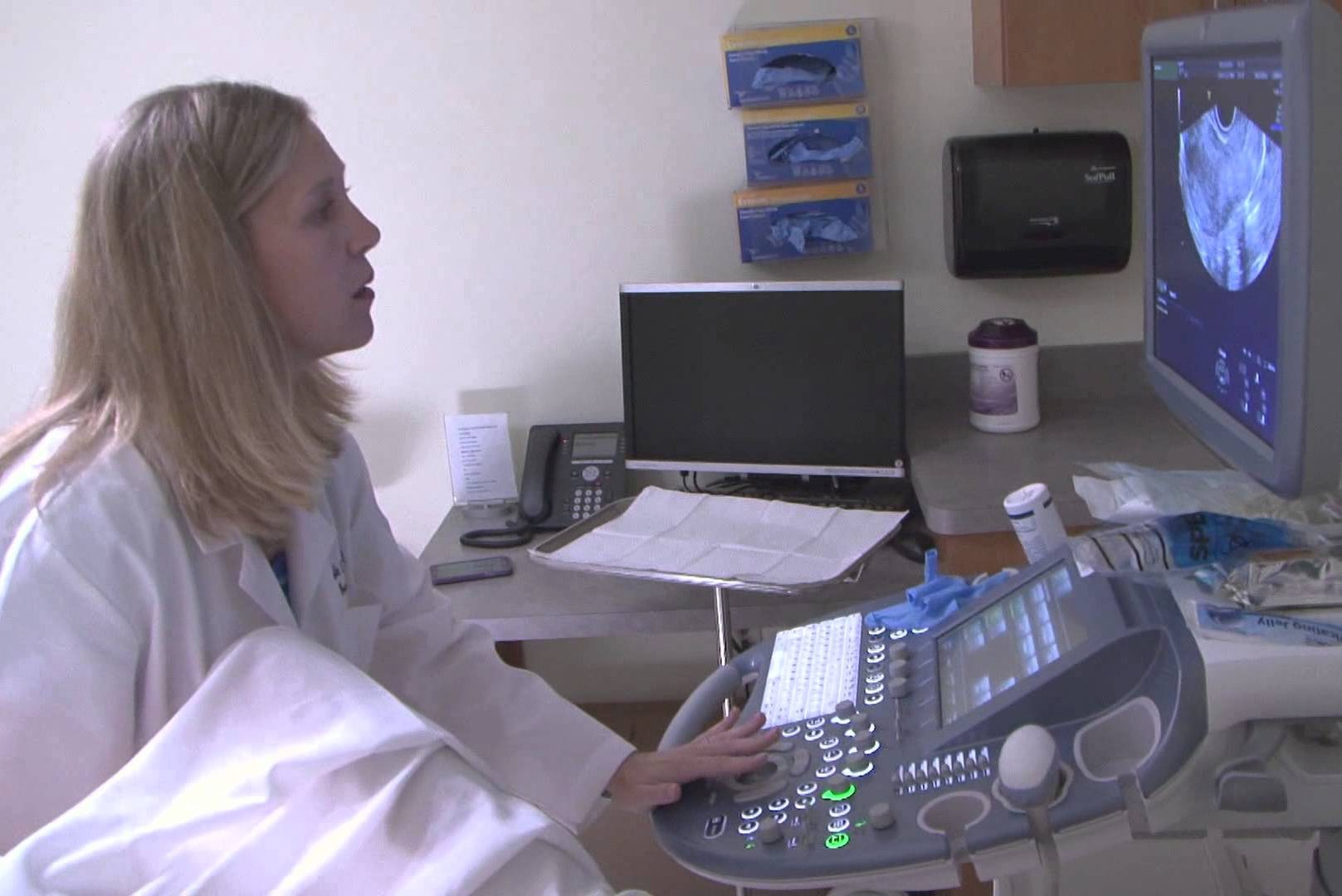You could say Dr. Danielle Luciano was ahead of her time when she joined UConn Health’s obstetrics and gynecology practice three years ago.
Three-dimensional ultrasound was not widely used for diagnosis of and surgical preparation for most gynecologic conditions. But it was something Luciano was already an expert in and was using regularly to identify problems such as ovarian cysts, fibroids, endometriosis, and anomalies in the uterus and fallopian tubes.

In recent years the American Fertility Society has been recommending 3-D ultrasound for a growing list of gynecologic conditions, thanks in part to research by Luciano and colleagues that proves 3-D ultrasound is effective for many GYN applications.
Not only that, it works out much better for the patient, Luciano says, because she can get so much accomplished in a single half-hour office visit.
“When I’m doing the ultrasound, I can give her the results as I’m doing it,” Luciano says. “And I can do preoperative planning, I can decide what I need for the operating room. The patient understands because she can see the pictures in real time.”
It fits right in to the larger objective of the UConn Health Women’s Center, the comprehensive suite of services on the eighth floor of the Outpatient Pavilion.
“It’s just another thing that they don’t have to go someplace else for,” Luciano says. “They don’t have to go get an MRI anymore, they don’t have to go to radiology to get an HSG (imaging to analyze the uterus and fallopian tubes) anymore, they can have their tubes evaluated in the office, and then they can go and speak with the fertility specialist at the same time.”
Luciano says the advances in 3-D ultrasound technology are such that the images are so much faster and clearer than they were just a few years ago, making it the preferred option for GYN imaging.
But that’s something she’s believed for eight years now.
“It’s better for the patient, because she gets educated at the same time,” Luciano says. “Patients come in for their tubal test and they say, ‘When do I get the results of this?’ and I say, ‘As I’m doing it.’ And it just relaxes them, because they know they’re not going to come out of here with more questions. They’re going to come out with answers. And they love that.”



